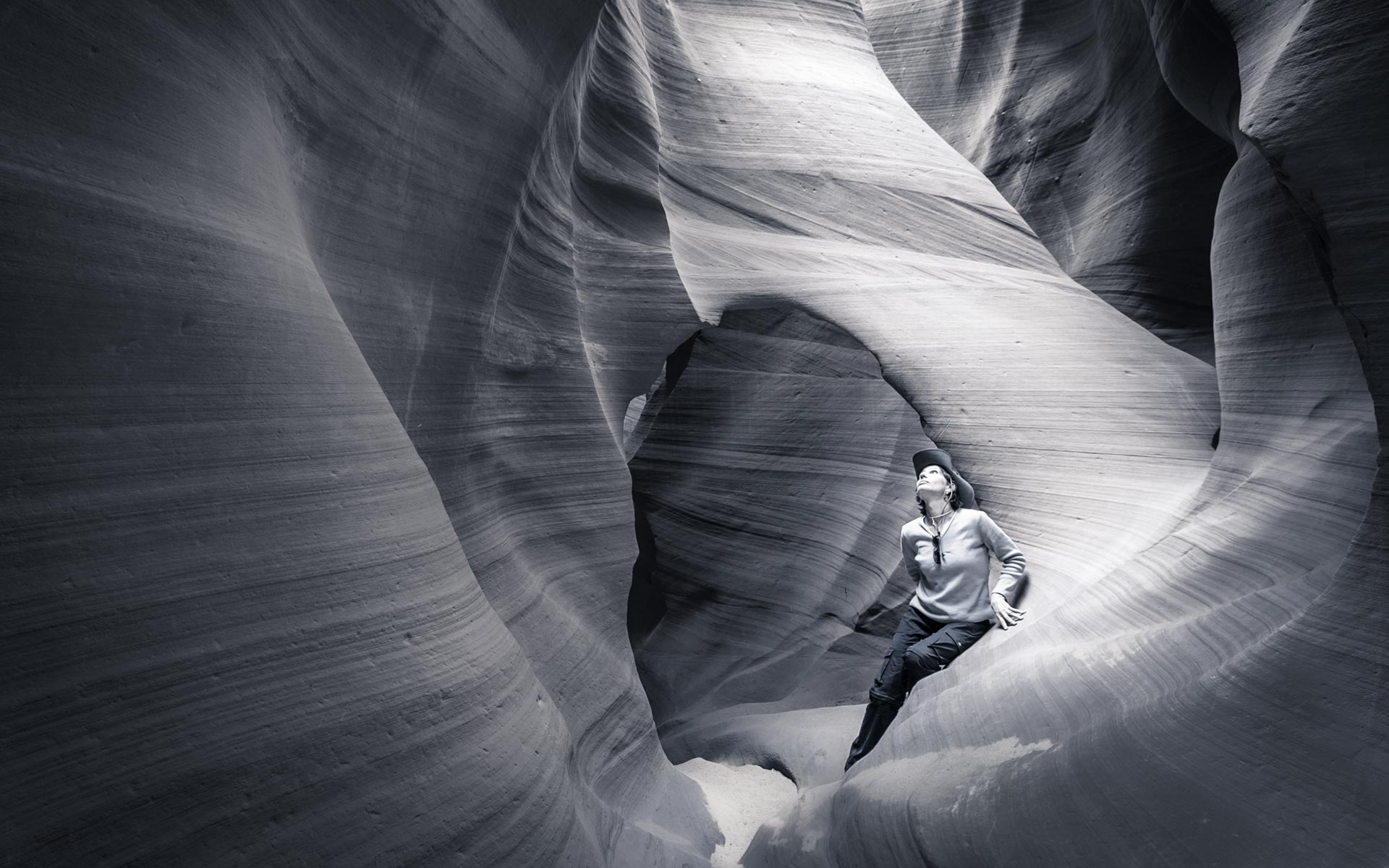
- Destinations
- AZ
- Around Page
- Lower Antelope Canyon
If there is such a thing as a Photographer’s Mecca this has to be Lower Antelope Canyon. Anyone that takes pictures in the Southwest has to go to the Upper and Lower Antelope Canyon. Not only photographers pilgrim to this sanctuary. It became over the last 30 years one of the most popular attractions in the surroundings of Page. Do not even think of visiting the area and not going to the Antelope Canyon.
Well, there is just a little problem with the place. Everyone wants to see it and at the end it is supercrowded and taking serious photography turns into a real challenge.
The Upper and the Lower Antelope is bissected by AZ 98. Both are very distinct and both deserve a visit.
Getting to the Lower Antelope Canyon
To reach Antelope Canyon, leave Page southeast via Coppermine road to AZ 98 in the direction of Kaibeto, aiming towards the power plant. The entrance to Upper Antelope Canyon is about 2 miles from the junction with AZ 98, just pass mile marker 299. It is on the right side of the road, well marked, and you cannot miss it. The road to the Lower Antelope Canyon is located almost opposite the entrance to the Upper canyon and is well marked too.
Lower Antelope Antelope can only be visited independently. It may not be open at all times during winter months. It usually opens from 8 AM to 5 PM. As of this writing the fee is $25. It includes the Navajo backcountry permit fee, and you can deduct it from the Upper Antelope Canyon fee if you visit the latter on the same day.
Taking shots:
The best time to photograph Lower Antelope Canyon and obtain a rich palette of colors is from very early morning until about 11 AM. Light becomes somewhat less attractive after that.
You should take almost your entire photographic gear with you when entering the canyon. OK, filters are really not necessary, but all the rest yes, especially the tripod, a spare battery, and make sure that you have plenty of storage for all the pictures. A wide-angle lens is mandatory, but also a mid range lens makes sense. I used up to 105 mm to isolate certain formations. Make sure all your sensitive equipment is in your bag when you move from A to B. The canyon is quite tight and the walls are pure rough sandpaper. Scratches to your equipment can be the result of touching the walls or even worse when stumbling and hitting the equipment against the walls.
If you are serious about your photography, you may very well end up spending hours inside the canyon. Take water in summer and warm clothes in winter. It can get unbearably hot in the summer and extremely cold in winter.
Last update: May 16, 2011

